Guide, Travel
The Everest Base Camp Trek Packing List (no porter)
Before heading out on the toughest Everest region trek – the Three Passes Trek in Nepal – for our honeymoon, my husband and I read a number of sources on what to pack for trekking to the Everest Base Camp over the three tough passes. However, despite numerous warnings of other travelers of packing light, we still managed to overpack and had to leave a few things behind here and there.
Additionally, when on the trek I realized I was really missing a few things that I would have never thought of bringing on the trek but really wished I had on some cold nights in tea houses. So below is a packing list I wrote up one cold evening in the tea house.
Everest Base Camp Packing List
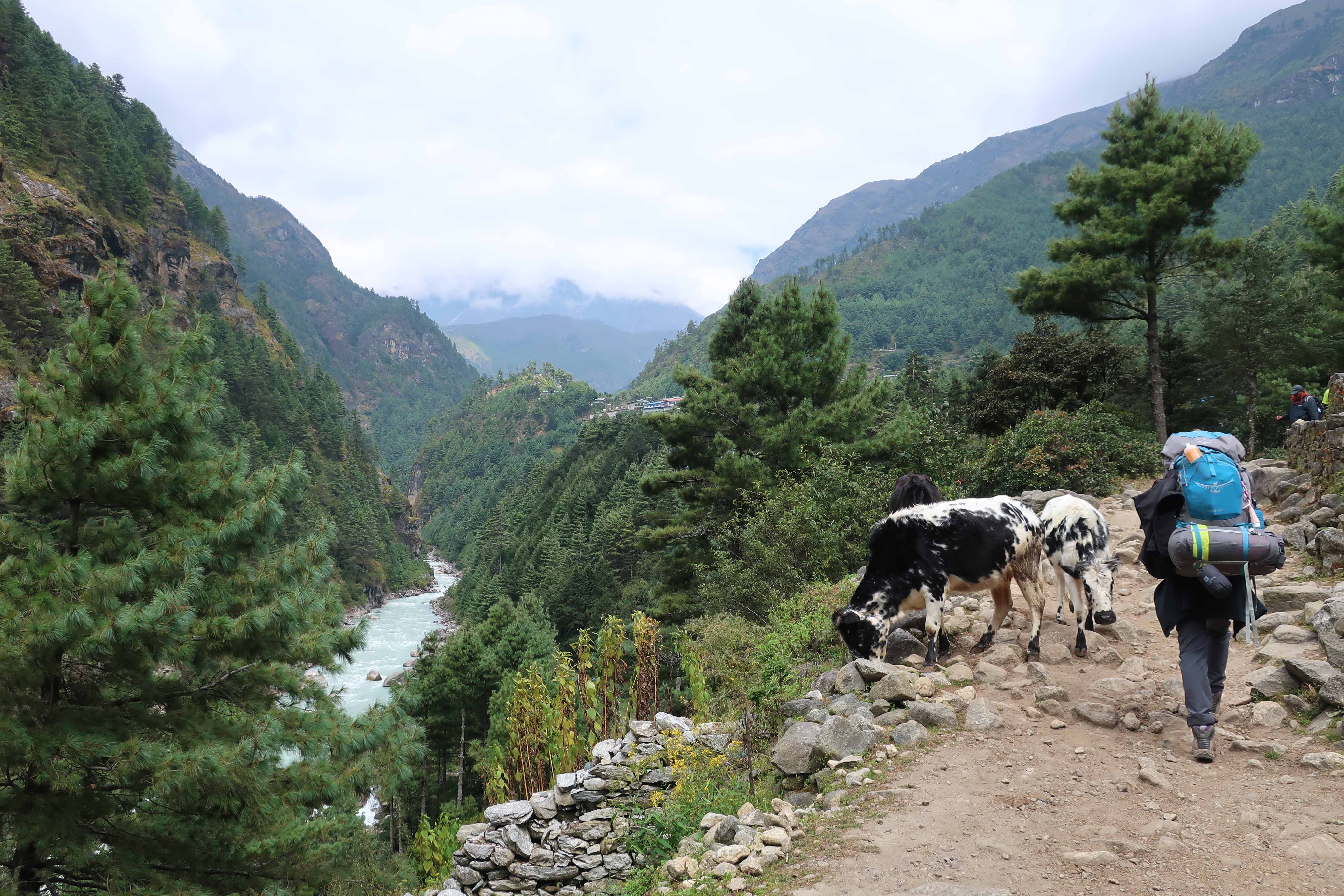
So if you are trekking without a porter, packing light is one of the most important things to consider when preparing for your trek. Don’t forget that you will have to carry about 2 L of water on you at all times so when you are done the packing, maybe do a test hike and see if your pack is heavy. If it is at sea level, then it will only get heavier as you go up and the air gets thinner. Hiking at altitude while your body is still acclimatizing is like running while breathing through a straw… so pack light you won’t regret it
Everest Base Camp Trekking Clothes
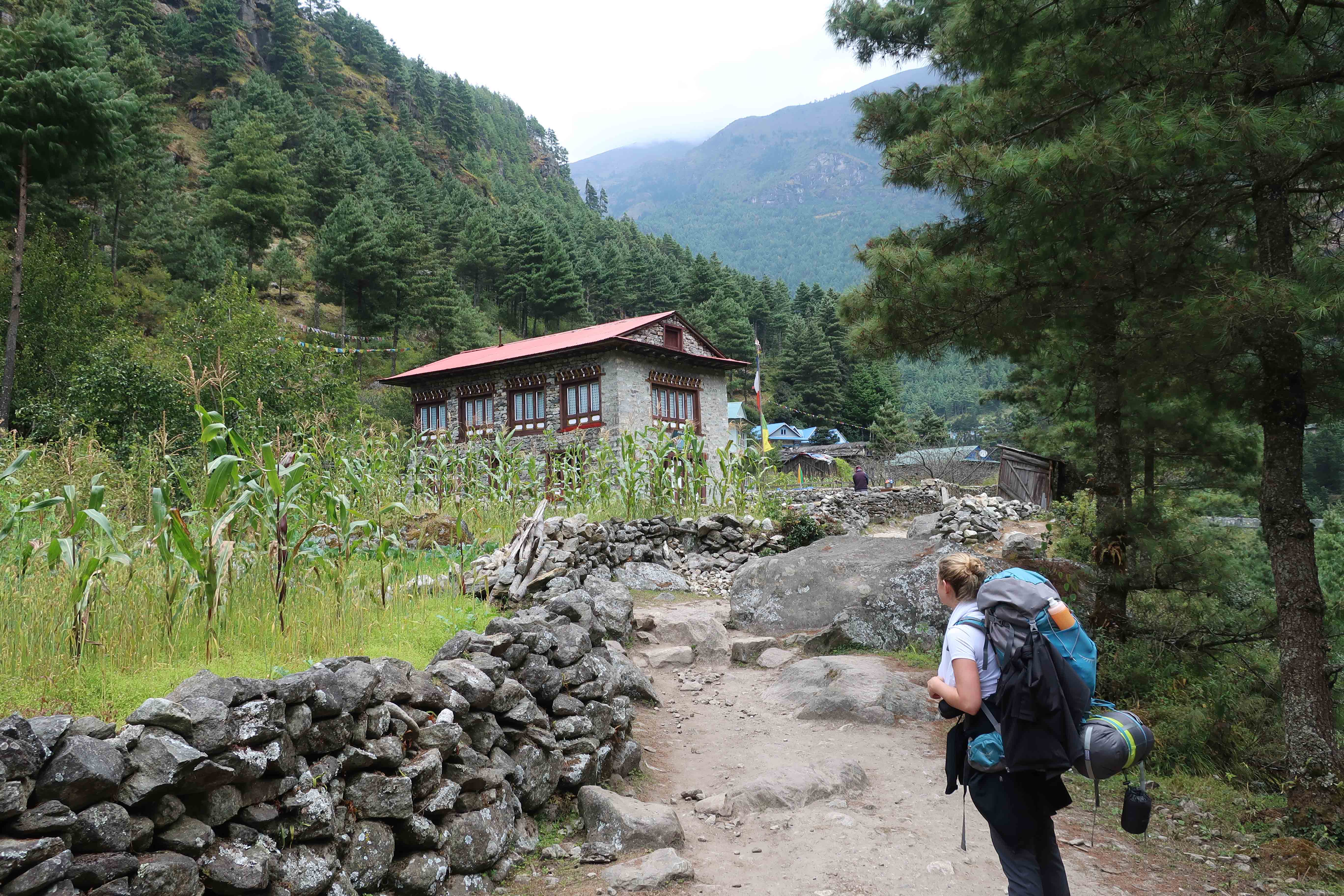
Please note that this is a packing list for hiking solo (without a porter or a guide). I majorly overpacked by going off the packing lists I found online, mainly because most of those were for hiking with a porter situation. Also, you can do your laundry at most teahouses, so keep that in mind when packing.
- Hiking Pant-Short (1 pair). This is an epic hike, so invest in the right gear. I’d recommend a light and water repellent hiking pant that turns into shorts – less to carry, and the short part will be useful in the first half of the trek.
- Heat tech Liner Pant (1 pair). I got a Uniqlo heat tech clothes and loved it on the trek as it’s light, comfy, and hot. You’ll appreciate these higher up, especially at night, so don’t forget this item. And as you’ll only need it in the higher up villages, you can safely take one.
- Sports Undies (depends). These aren’t heavy, so whatever you’re comfortable with but remember, you’re going to carry it all. I took one pair per two days and got the Uniqlo AIRism collection seamless ones, but you’ll be safe with any sports underwear – stay away from cotton.
Sport Bras (2-4 pairs). Whatever is comfortable here. Two pairs were enough for me by; depending on how many days you’ll have trekking, you can take more, or you could also pay for the tea house to do your laundry.
- Heattech Camisole (2 pairs). Base layers are essential, and Uniqlo’s heat tech series is very good at keeping dry and non-stinky. 🙂 I only had two of these and used those in the higher villages as it gets colder. You can wear this one under everything else during the day and the same thing at night, but these are not essential.
- Heat tech Short Sleeve T-shirt (4 pairs). Here too, I got the Uniqlo heat tech t-shirts, and those were just great! I was worried I’d need more, but I was ok with four. They fit snug and keep you warm and, surprisingly, don’t get wet and stinky. I also took some sports t-shirts (Nike and Adidas), which I left on the trek as they were smelly after a few hours into the trek. You can go for merino wool t-shirts too those are also good options—just no cotton.
- Merino wool sweaters (2 pairs). Once again I got all of mine at Uniqlo, their extra-fine merino wool turtlenecks were awesome – soft and warm. I am sure MEC has lots of options too, but any merino wool hiking sweaters will do.
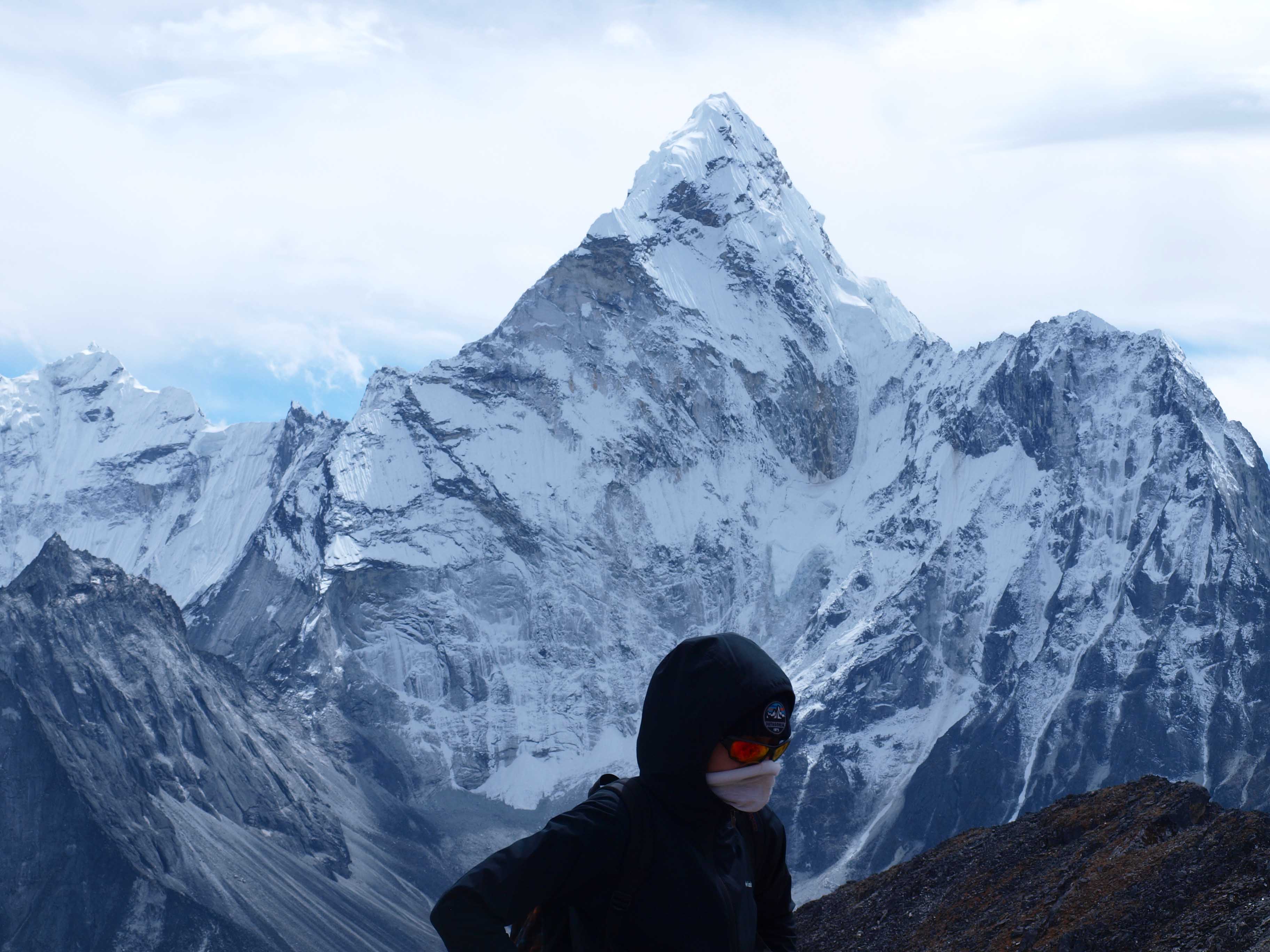
- Fleece Jacket (1 pair). All you need is one good fleece jacket to cover up those base layers and wear under your windbreaker. I have a Colombia loose-fitting one, and it was my favourite piece of clothing on the hike, especially when you want to cozy up in the tea house after a long, tough day.
- Merino Wool Hiking Socks (4-5 pairs). Up to you how many pairs you wish to carry, but you can take a pair of trekking socks and a few liner socks, or take more pairs – depending on how much you can carry.
- Neck Gaiter (1 pair). Mountain air is dry and cold, and the trekking path gets dusty, so this one is pretty important. Get a good quality neckband that will fit tightly and cover your neck. Make sure it’s thin enough so that if you pull it over your face, it’s easy to breathe. I got a thicker one, and it was a nuisance as it was too hot with it and too cold without.
- Gloves (2 pairs). Get one thin pair and one thick skiing gloves. Nothing more to add, just make sure that the thicker gloves you get are 100% windproof and warm.
- Windbreaker (1 pair). Once again, it gets windy, so a good think windbreaker that fits easily over your fleece and has a hood and zips up all the way to your nose would be a great option. MEC has lots of options.
- Light Down Jacket (1 pair). Up to you on style and fit, but crucial to have something thick and warm Pick one that’s warm enough to go in -20 C, light and can be compressed into a size not bigger than your gloves, has a hood and zips up everywhere. I got mine at MEC, their house brand with the hood, and it was the best purchase. I had to exchange the one I got before (a thinner skiing jacket) for this warmer option, and I am glad I did.
- Rain pants & Jacket (1 pair). We didn’t need ours as the weather was perfect, but you never know, so it’s better to be safe than sorry, as they say. Get something light so you can carry it.
- Windproof Wool Hat. You need this one a lot, and it must be windproof, so I’d actually wait for Namche Bazaar and then get a yak wool hat there. They are about 300 rupees, and it would make for a nice souvenir filled with fantastic memories (and warm you up). Make sure the hat covers your ears as the wind gets freezing and strong above 4,000 meters.
- Sunhat. Also an important one, but you can buy easily in Namche so I wouldn’t worry about it until you get to Namche Bazaar and then pick from a myriad of options.
Everest Base Camp Hiking Gear
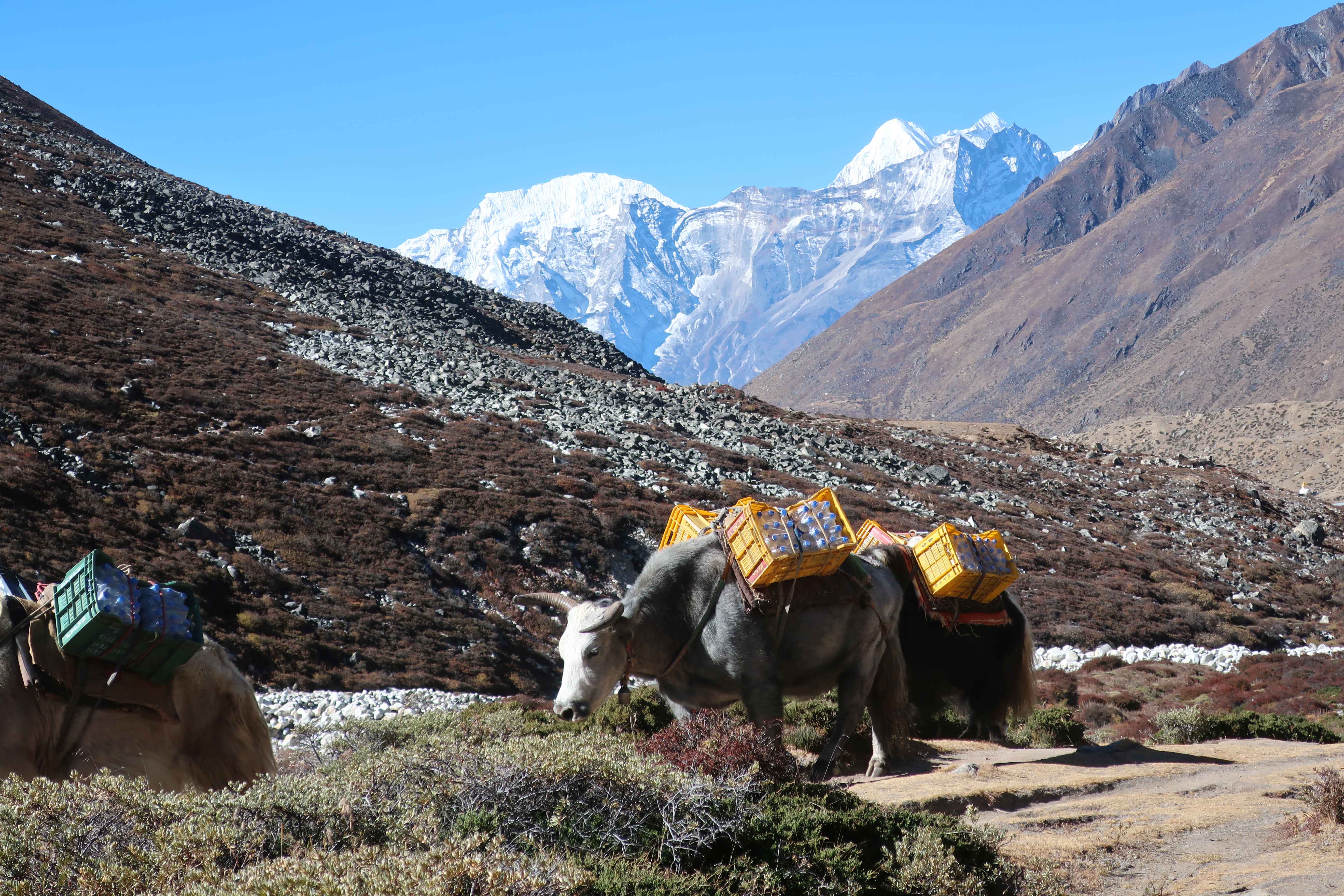
- Backpack rain cover (1 pair). Another important piece of gear we didn’t use but is very good to have.
- 65L or 70L Backpack (1 pair). If you have one already good, if not, go for something comfortable around your waist and shoulders as this will be on you almost 24/7, loaded with items. Also, an option that lets you open it up like a suitcase would be ideal as it will get pretty dull and annoying to pack and unpack almost daily. Osprey is a good brand.
- Daypack (1 pair). There are lots of options available. I took my Herschel daypack that folds into a small pouch the size of my palm and weighs nothing at all. If you are travelling with a group and porters, then you’ll need a more durable option as you’ll be carrying your day pack every day. In our case, we trekked solo, so the daypack was only to take some warm clothes and water with us to little side treks to Kala Patthar and Gokyo Ri, for example.
- Trekking Boots (1 pair). If you don’t have a pair already, make sure you break in the new ones before heading out to Everest Base Camp. Best is to take the ones you already have; make sure the boots you’ve got have ankle support, are non-slippery, and most importantly, are super comfortable. If you don’t have a pair yet, you could get one at MEC or any other outdoor sports store and break them in on a day hike before you go to Nepal. This would be an excellent way to test how heavy your backpack is and whether you should re-evaluate your packing list.
- Tea House Shoes (1 pair). After a long hike, it’s nice to wear something loose to let your feet relax and warm up as it gets pretty cold in tea houses until the center stove gets going. A pair of UGG slippers or similar would be an ideal piece for those tea house evenings. And comfy warm socks you could wear in the evenings and at night in your sleeping bag (optional).
- Sleeping Bag (1). Your down jacket, hiking shoes, and sleeping bag are the most important items for a successful trip. I get cold at night, so I wanted something warmer, and I shopped at MEC for a -9C CASSIOPEIA mummy synthetic sleeping and was very happy with my purchase. It gets pretty cold at higher altitudes (our water froze in Gokyo at night), so a warm bag is a great idea. You’ll also get some covers and pillows at all tea houses to add warmth. If you need more info on what to expect from a tea house in the Himalayas, check this post.
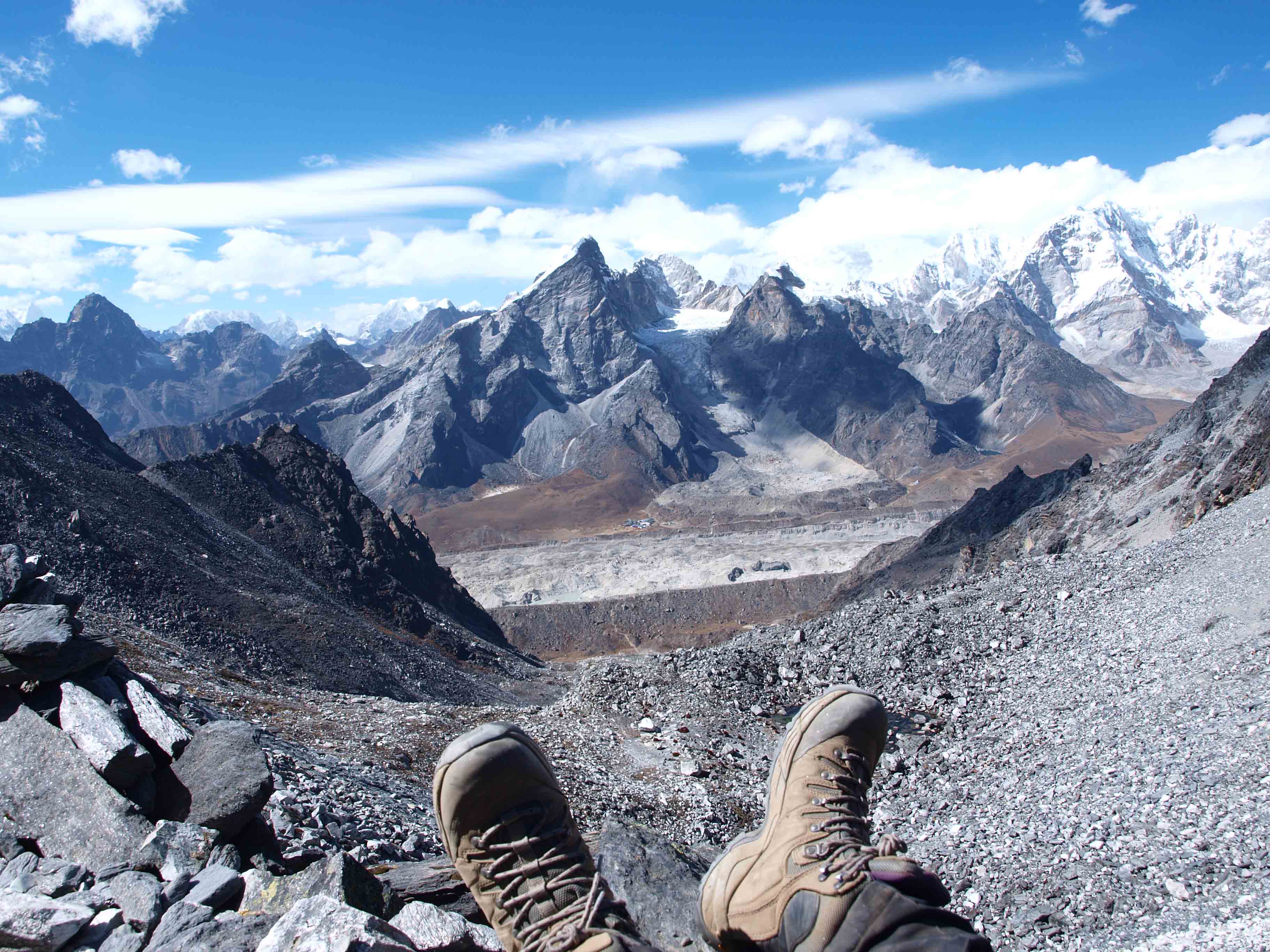
- Small Microfiber Body Towel (1). One medium-sized towel is all you need. The ones for backpacking are quick-drying, so that’s good and are light to carry. You can take a shower at most teahouses, and now that they heat water with gas, the water gets pretty hot, which feels fantastic after a long day of trekking in the beautiful but challenging Himalayan trails.
- Rubber slippers (1 pair). Those are useful for after the shower and while showering.
- Shower Bag (1). A good bag that you can hang and have all your toiletries well organized will come in handy. But this item is optional.
- Water Bottles (3). Having water on you at all times is important because the higher you go, the less you realize that you may be dehydrated, and dehydration can cause some nasty AMS symptoms (like a throbbing headache). So it is essential to drink enough fluids.
- Headlamp (1 + batteries). A must have so bring a few extra batteries.
Everest Base Camp (Meds & Supplements)
- Advil 400 mg. Helps with headaches and body aches. I had many headaches and two times pretty serious ones, but the rule of thumb is that if Advil works, then your AMS is mild. The key is to go at your own pace and not doing anything that may hurt your health.
- Diamox (optional). Your travel doctor will give you all the details on how to take this one and what the dosage is. Diamox is optional and could be used as a prophylactic as well as a treatment meds. We took Diamox starting from Lukla and until our descent. Our doctor recommended taking it one day before ascending, half a pill every 12 hours until a day after you reach your highest elevation. Some side effects include: tingling sensations in your feet, hands, and potentially face, soda tastes flat, and it’ll make you pee a little more often. Note: please keep in mind these were my side effects; yours may differ.
- Antibiotics. On top of getting all of your travel shots, you have to take some antibiotics with you in case you get sick. My husband got pretty ill, but the antibiotics he took helped within 24 hours.
- Band-aids (Many). They don’t weigh much, and it doesn’t hurt to get some. We got all sorts of them, and I used a few on the painful calluses.
- Multivitamins. Take those daily as you won’t be getting much fresh fruit and veggies, plus getting sick on a hike would ruin not only your mood but also slow down your acclimatization period.
- Hand Sanitizer. They sell those everywhere on the trek, so don’t go overboard (like we did), take two small ones per person, and buy more as needed. They all sell that and toilet paper and many other small items like chocolate bars and alcohol.
- Saline Solution Nose Spray. This one we didn’t take with us, and I regret not getting it. The air gets really dry on the trek, so a little hydration will go a long way.
- Cold Meds. Teahouses get pretty busy, and many people get sick on the trek, try to wash your hands and sanitize them as often as you can. That being said, chances are you will catch a cold. I got sick halfway, so having Buckley’s Daytime pills helped get me through those tough hike days.
- Nose Spray. Get Otrivin because it works very well, and the last thing you want is going through a roll of toilet paper on nose-blowing in a day (as you may have guessed, that was me).
- Cough drops. Didn’t really need those on the hike, but it doesn’t hurt to have on you, especially those that free up your nose. Take some but not more than one pack of those, or just get two packs of halls.
- Electrolytes (2 packs). These are actually useful, but we took way too many too (5 packs of Nuun). Two packs are enough and take a flavour you like.
- Body & Face Cream. A small pack will be enough, and you’ll appreciate having that on you when your hands and face get super dry from cold air, intense sun, and dry air. I had a super tiny Nivea cream, which we bought on the way, so even if you run out, you can take those.
- Sunscreen Face & Lips (a must). Super important as you’ll burn like there is no tomorrow without sunscreen. Also, we’ve seen a lot of tourists trying to buy sunscreen, but that was one thing that wasn’t that easy to find in the higher Himalayan villages. Take 50 SPF for your face and the same for your lips.
- Lip Balm. It’s good to have a regular one too. I like Burt’s Bees, the one with a minty flavour that makes your lips tingle. This numbing sensation would be great on burnt dry lips.
- Nail Clipper. Take a small one so not too heavy. A nail filer is also useful in case you chip a nail.
- Alcohol Spray & Tablet Towels. You could also take wet wipes, but they weigh a lot. That’s what we took and regretted it as we only used one pack between the two of us. I read that the showers will be lukewarm and not available after certain villages before our trip, and that’s why we stocked up on wet wipes. However, when we travelled (October 2018), the showers were hot (42C – 51C ) and available at almost every teahouse. They get more expensive the higher you go, so the choice is yours.
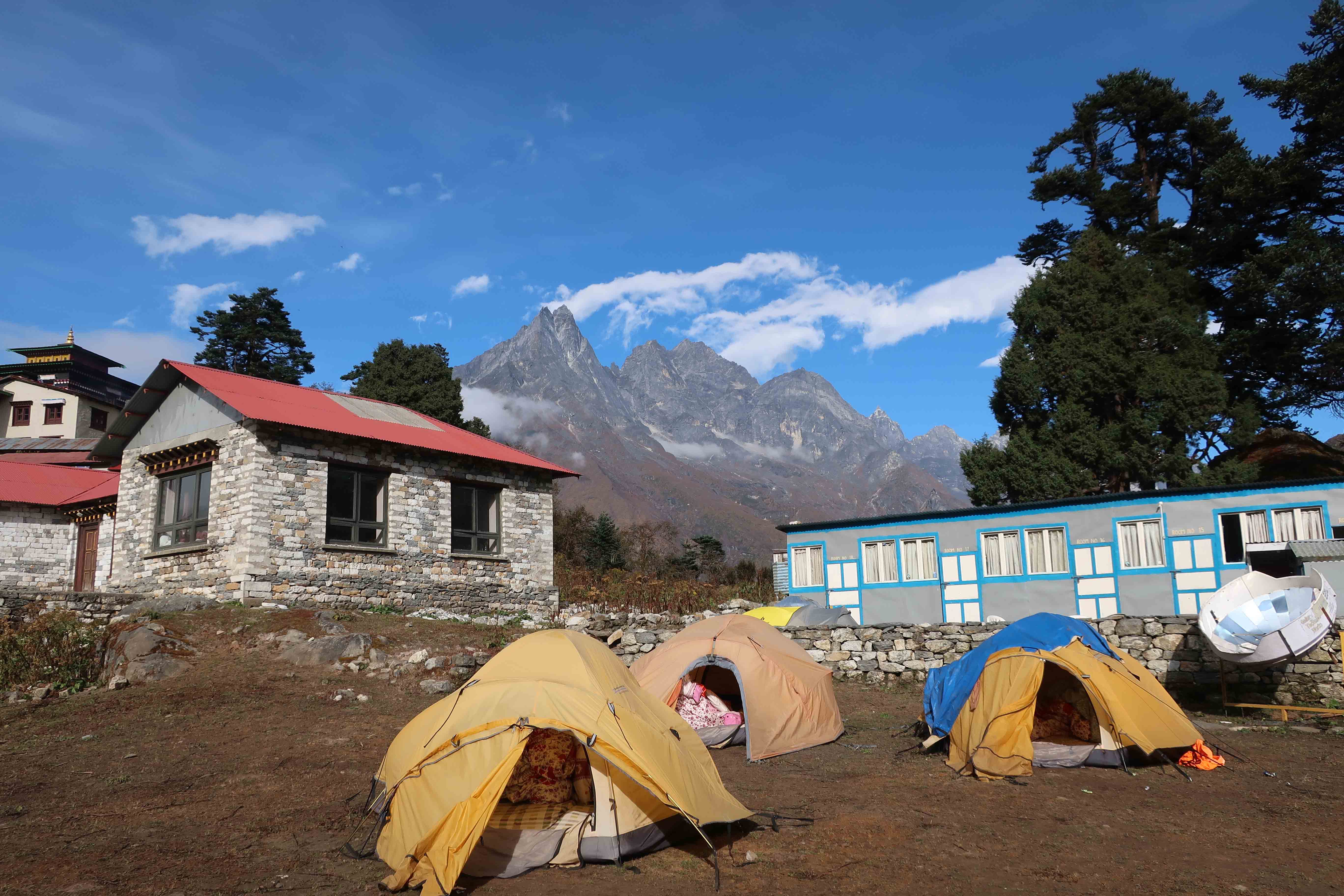
Everest Base Camp (Miscellaneous)
- Polarized Sunglasses. The sun gets very strong, so it will be hard to look around without those. Get a nice pair of maximum sunblock.
- Feet Warming Pads (optional). An optional item. I would use them to warm the inside of the sleeping bag in higher villages when it gets really cold at night.
- Something to Read. There is not much to do at the teahouse after sunset, and you’ve had your dinner. Most hikers socialize, but some days you may not be in the mood. It’s nice to have a thin light book to read and maybe something to write on and to write with for those days.
- Protein Powder (optional). After Namche Bazaar, you will pretty much have to go vegetarian, and you may feel sick due to AMS and not in the mood to eat the big dinner you need after a day of hiking. So consider picking up a few pouches of protein powder of your choice. I wish I read this somewhere before heading out, but you live, and you learn. Due to AMS, I was pretty much on tea and super light dinner for the first ten days of our hike or so, and as a result, I lost more than 5 kg on the hike. A protein shake instead of dinner on those days would have been a good solution. Once again, this is optional.
- Powdered Miso Soup (optional). I am suggesting this one because I remember one day sitting at a dinner table in a teahouse we were staying at and feeling hungry but super nauseous. Next to us, a group of trekkers had some powdered miso soup in pouches they brought with them, such a smart idea. After eating unfamiliar food and trekking so much, you crave something you know, like instant miso or ramen. Note: you can have a rara veggie noodle soup; it’s the Nepali version of instant noodle soup. We just discovered it way too late.
I think this completes the essentials and remember that you can buy chocolate bars, hand sanitizer, toilet paper, and beer (not recommended, but you can) on the hike. If you have any questions, don’t hesitate to post them below and happy trekking!

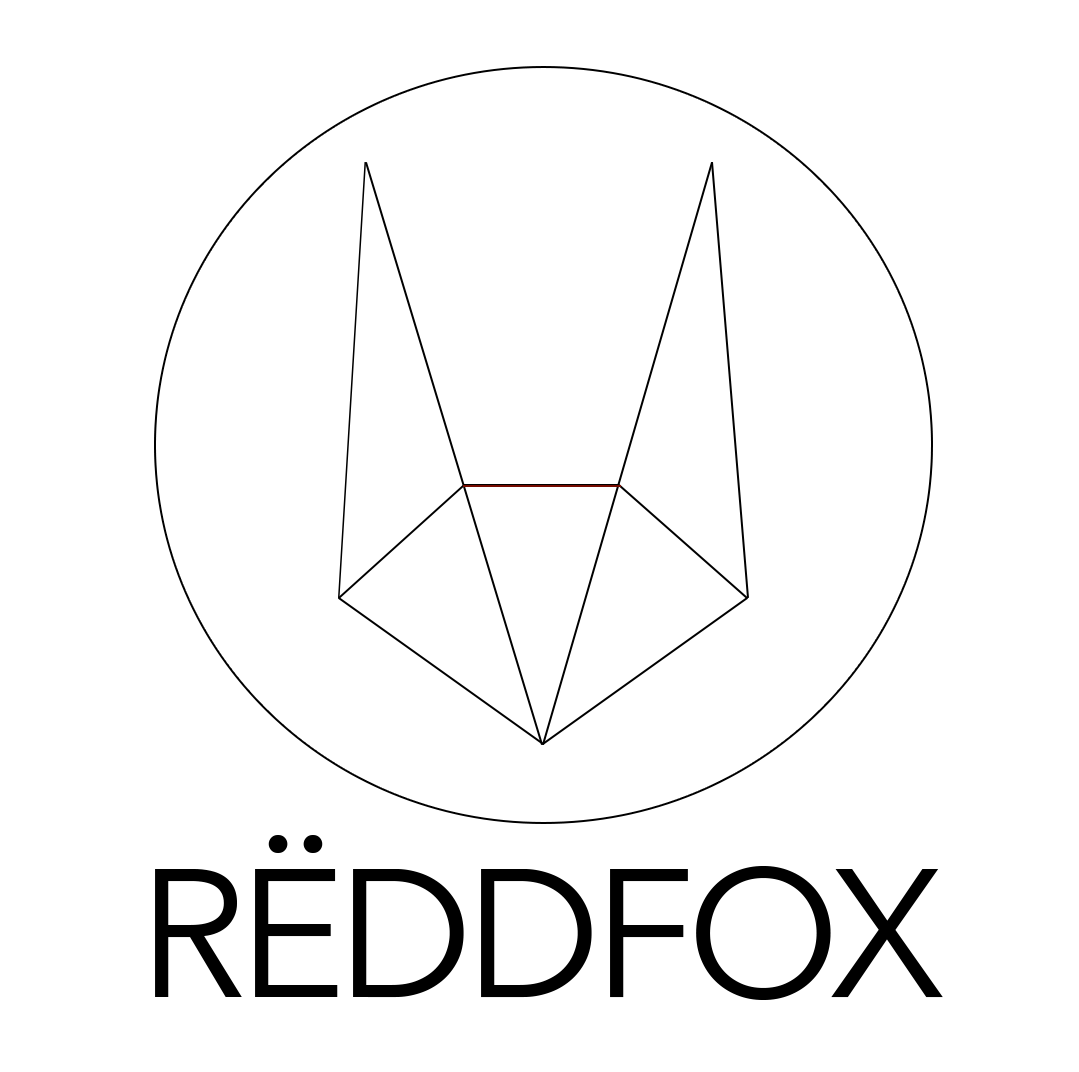
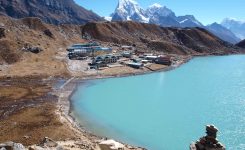
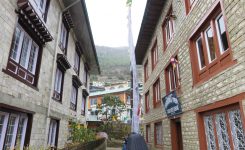
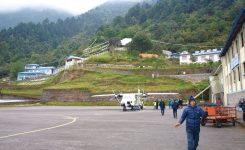
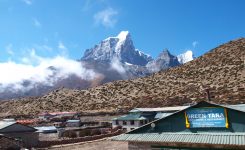
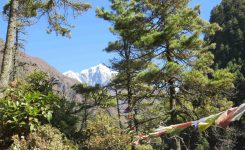
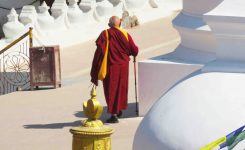
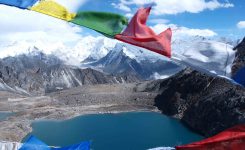
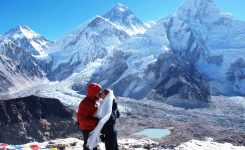






4 Comments
Michael
Enjoyed reading this post! First I’ve read on “saline spray” – Great tip!
REDDFOX (Author)
Thank you! Glad you liked it and glad it’s helpful! 😀 it’s an amazing place!
Michael
What size pack did you use?
REDDFOX (Author)
I believe it was the 65L Osprey